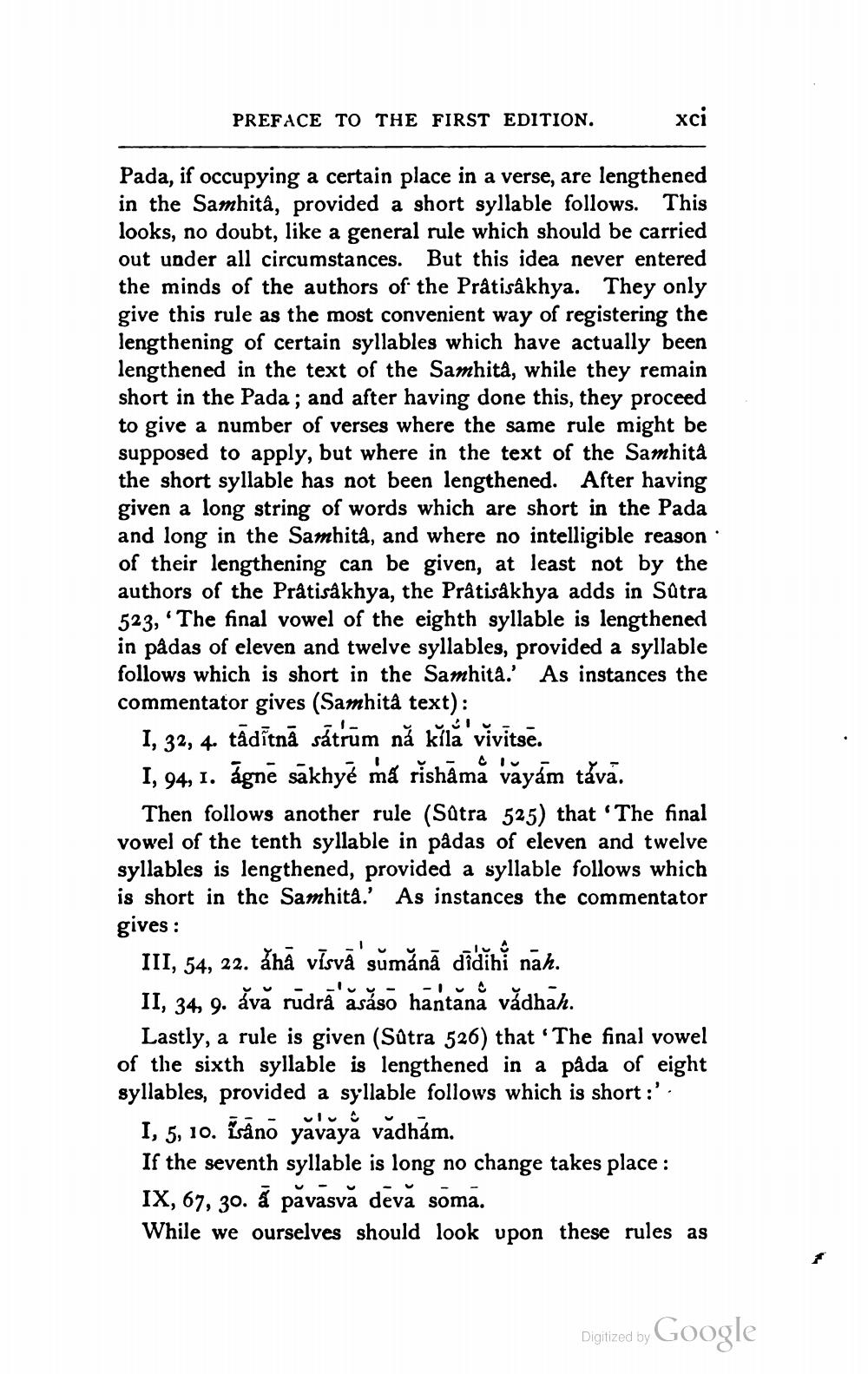________________
PREFACE TO THE FIRST EDITION.
xci
Pada, if occupying a certain place in a verse, are lengthened in the Samhita, provided a short syllable follows. This looks, no doubt, like a general rule which should be carried out under all circumstances. But this idea never entered the minds of the authors of the Prátisâkhya. They only give this rule as the most convenient way of registering the lengthening of certain syllables which have actually been lengthened in the text of the Samhità, while they remain short in the Pada; and after having done this, they proceed to give a number of verses where the same rule might be supposed to apply, but where in the text of the Samhita the short syllable has not been lengthened. After having given a long string of words which are short in the Pada and long in the Samhità, and where no intelligible reason of their lengthening can be given, at least not by the authors of the Prátisakhya, the Prátisakhya adds in Sutra 523, 'The final vowel of the eighth syllable is lengthened in pådas of eleven and twelve syllables, provided a syllable follows which is short in the Samhita. As instances the commentator gives (Samhità text):
1, 32, 4. tādītnā sátrum nå kílá vivitse. I, 94, 1. ágne sakhyế má răshāmå văyảm tăva.
Then follows another rule (Satra 525) that 'The final vowel of the tenth syllable in pådas of eleven and twelve syllables is lengthened, provided a syllable follows which is short in the Samhita.' As instances the commentator gives :
III, 54, 22. ănā vīsvā súmånā didihỉ näh. II, 34, 9. ăvă rūdrā'asảső hantănå vădhah.
Lastly, a rule is given (Sûtra 526) that 'The final vowel of the sixth syllable is lengthened in a pâda of eight syllables, provided a syllable follows which is short:'.
I, 5, 10. isāno yavaya vădhám. If the seventh syllable is long no change takes place : IX, 67, 30. ă păvasvă devă soma. While we ourselves should look upon these rules as
Digitized by Google




